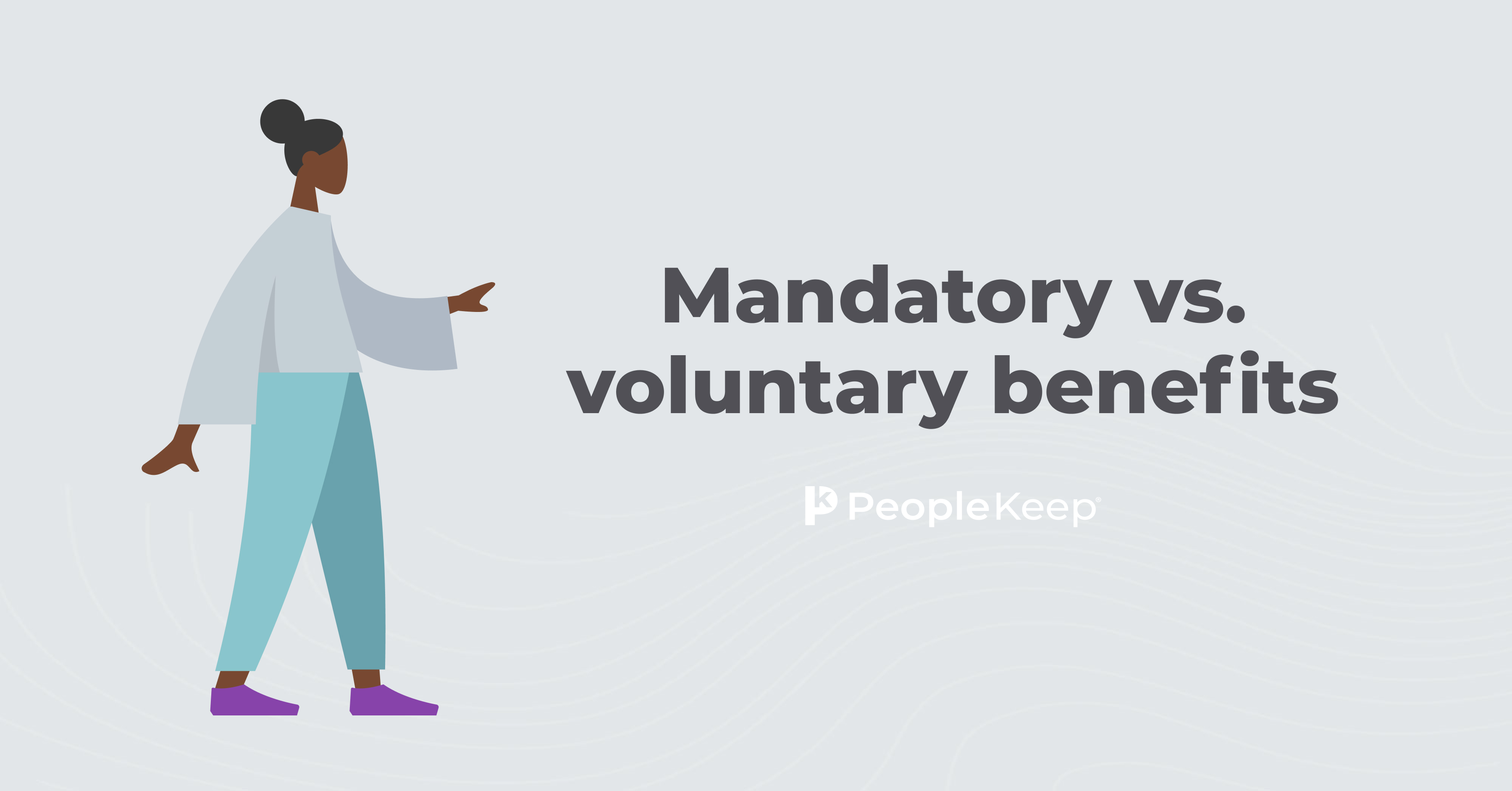Which benefits attract and retain good employees?
By Chase Charaba on November 3, 2024 at 7:15 AM
About 50.5 million Americans1 quit their jobs in 2022, leaving employers scrambling to fill the gaps. While experts declare that the Great Resignation is over, employees continue to quit their jobs in search of better opportunities and benefits. And with 9.6 million job openings2 nationwide, employers must go the extra mile to get candidates in the door.
Benefits are one of the best ways to attract talented employees and increase retention. But, with so many types of benefits available, how do employers—especially those with a limited budget—choose which ones to offer to help their company stand out among competitors?
In this article, we'll go over the benefits that are most helpful in increasing job satisfaction and reducing your employee turnover rate.
1. Health benefits
A surefire way to recruit new talent and keep them at your organization is to provide health benefits as part of your benefits package. These can come in the form of traditional group health insurance or health reimbursement arrangements (HRAs). You can also offer health and wellness fringe benefits.
According to our 2024 Employee Benefits Survey Report, 92% of employees surveyed value health insurance benefits. If you don't offer a healthcare benefit, you could be missing out on talented job seekers, and be at higher risk of having your current team members walk out the door.
Let's look at a few types of health benefits that improve employee loyalty in more detail.
Traditional group health insurance
Roughly 159 million Americans3 have employer-sponsored group health insurance. Traditional group health plans are a popular option for an organization's benefits package. Its significance isn't only in its role in hiring and retaining employees but also in the time and financial investment employers make to search for, administer, and purchase a plan.
Depending on the size of your business and the health benefits competing organizations are offering, you may feel like you have no other choice than to bite the bullet and pony up for a group plan that's going to increase in cost every year when it renews.
But, there are some considerations to make before choosing a group plan. To improve the employee experience and make your health coverage a true benefit, you must offer the kinds of healthcare policies your employees want.
Since many companies have employees of different ages, health statuses, and income levels, a one-size-fits-all group health insurance policy rarely makes all employees happy. While it may look nice on paper for an employer to say they offer a group health insurance plan, there's another health benefit option that may work better for both themselves and their employees.
Health reimbursement arrangements (HRAs)
A benefit option that has gained popularity in the last several years is the HRA. This type of health benefit has the same tax advantages as a group health insurance plan while giving employers complete control over their health benefits cost.
With an HRA, employers offer a monthly allowance that employees can use toward eligible medical expenses like health insurance premiums, prescription medications, and doctor's visits.
Another benefit of an HRA is the flexibility to customize the benefit to your needs. Employers can decide which medical expenses they want to reimburse, which employees are eligible to participate, and how much money they want to offer their employees in the form of allowances.
Once an employee submits proof of an eligible expense, the employer reimburses them, tax-free, up to their set allowance amount. This allows employers to provide a health benefit with nearly any budget.
PeopleKeep offers the three following HRAs:
- Qualified small employer HRA (QSEHRA)
- Individual coverage HRA (ICHRA)
- Group coverage HRA (GCHRA), also known as an integrated HRA
You must offer a health plan if you're an applicable large employer (ALE)—an organization with 50 or more full-time equivalent employees (FTEs). These health plans need to meet minimum essential coverage (MEC) for at least 95% of FTEs to satisfy the requirements of the Affordable Care Act. Thankfully, an ICHRA can help with this if your allowance is affordable.
Since employers offering an HRA reimburse their employees for premiums instead of choosing a plan for everyone, employees can go to the Marketplace and select the best plan for them and their specific situation. Everyone gets what they need, improving job satisfaction.
Health and wellness fringe benefits
Many businesses offer voluntary benefits to entice job seekers and keep experienced employees engaged. In some cases, these benefits are used to support employees’ health and wellness.
Why would a business want to offer health- or wellness-related fringe benefits? A recent Fractly survey4 found that 80% of employees want benefits or perks over a pay raise. Younger employees also named well-being as their top workplace want5.
One way you can offer this type of benefit is to reimburse employees for their health and wellness expenses with employee stipends. Unlike a wage increase that automatically goes to an employee's paycheck, a stipend encourages employees to spend their allowances on specific perks that you define.
You can also restrict eligible expenses to fit your needs. However, you can’t ask for receipts or proof of purchase for any healthcare items listed in IRS Publication 502.
A health stipend lets you reimburse your employees for their medical expenses, including supplemental health plans, like vision and dental insurance. With a wellness stipend, you can reimburse employees for wellness programs and activities, such as gym memberships and fitness apps.
Plus, if your employees don't use the total amount, you can keep the remaining balance, contributing to your organization’s financial wellness.
2. Retirement benefits
Retirement benefits, such as a 401(k) or defined benefits plan, are increasingly important in recruiting and retaining employees.
Like with health insurance, improving retirement benefits positively impacts employee morale. Our Benefits Survey Report shows that 87% of employees value retirement benefits, but only 54% of employers offer them.
Yet employers considering retirement benefits face many of the same problems they do with health benefits. When organizations face tighter margins, they look for ways to trim costs. As a result, both 401(k)s and defined benefits plans feel the pinch.
Employees at organizations that don't offer a 401(k) match retirement plan in their benefits package are less likely to want to stay at that company until retirement.
3. Remote work
One benefit consideration that will become more important than ever is remote work. The Bureau of Labor Statistics6 estimates that 27% of workers were fully remote in 2022. However, some experts believe the number was closer to 50%. Even if 27% was accurate, it accounted for 35.6 million U.S. workers in 2022.
At the same time, prospective employees are looking for remote work, with 9.4% of job postings on Indeed in 2022 being for remote positions7. Some businesses like Slack and Microsoft have allowed employees to work remotely to prevent turnover because 97% of employees8 don't want to return to the office full-time.
Allowing employees to work remotely full-time or on a hybrid model will keep employees happy. By eliminating commute times and gas costs and allowing employees to live where they want, they'll be more productive and dedicated to their work.
While remote work options are a perk, remember to offer additional benefits to teleworkers. When employees work from home, they often use their own internet connection and cell phone for work purposes. Sometimes, employees need help to pay for faster internet bandwidth to increase productivity and support positive business outcomes.
As TechRadar reports9, 67% of respondents on a HighSpeedInternet survey wished their employer covered their internet costs while working from home. Furthermore, a recent Oxford Economics survey10 found that 98% of businesses provide a full or partial stipend for mobile phone expenses to employees who use their devices for work.
A remote work stipend helps employees pay for their internet and phone bills when they work remotely. This will help ensure employees have a stable internet connection to work from home effectively.
In some states, such as California, the law may require you to reimburse remote work expenses.
4. Education benefits and professional development opportunities
Due to recent technological advances, there's a seemingly unlimited amount of free learning resources from content curators on YouTube and other online course providers. However, the need for university or continued education remains. In today's job market, pursuing higher education to qualify for executive-level positions is still valuable.
Our 2022 Employee Benefits Survey Report found that 61% of small to medium-sized business (SMB) employees value professional development benefits in the workplace. However, only 40% of SMBs provide them.
The education benefits with the highest employee satisfaction are tuition reimbursement programs and paid job training. According to Lorman, 76% of employees11 say companies are more appealing if they offer additional job training. Additionally, Harvard found that 92% of businesses12 have some type of educational benefit or employer-sponsored student loan repayment program in place.
Even once your employees have finished their higher education, there are still other ways you can support their professional growth. Consider hosting recurring knowledge-sharing webinars or offering a technology stipend to keep them up to date with the latest industry techniques and software.
This will show your staff you support their career path and want to give them all the tools they need to succeed.
5. Family benefits
One way to become an inclusive employer of choice is by offering family benefits. These perks support employees by making it easier for them to balance their personal life, work, and family responsibilities—and they’re becoming more popular.
A Willis Towers Watson survey13 found that 40% of employees want family-related perks and benefits. Of the organizations that offer family-friendly benefits, 72% of employers say the need to attract candidates and retain current employees is why they offer them.
Some popular family-friendly perks are fertility benefits, adoption assistance, childcare support, elder care, meal allowances, and pet insurance. You can offer all these benefits and more with a family stipend to be as inclusive as possible so all your employees can take advantage of the benefit—regardless of their family situation.
While the initial cost of offering family benefits may seem high, offering them on a reimbursable stipend model lets you set a budget you can afford and only pay your employees when they submit an eligible expense. Plus, you’ll save money on employee turnover and hiring costs by keeping your staff happy and satisfied with their benefits.
Other benefits that attract and retain workers
The benefits and stipends mentioned above affect employee retention and attraction. But there are other perks you can consider offering at your business, like life insurance, disability insurance, parental leave, and more.
Paid time off (PTO) is necessary for any benefit plan. Providing a PTO policy—whether it accrues, rolls over, or is unlimited—helps establish a positive company culture that prioritizes employees taking time for themselves and their well-being.
You can also offer a travel stipend in addition to your PTO policy to encourage workers to explore during their time off. After all, a healthy work-life balance helps boost employee retention, productivity, and morale.
A flexible schedule is another desirable perk for your current and future workers. Younger generations especially value flexibility in the workplace. To satisfy these workers, you'll need to establish flexible working hours or flex days.
In addition to wellness stipends, consider adding an employee assistance program (EAP) to your benefits package. EAPs are anonymous mental health benefits that help employees resolve personal issues that may negatively impact their lives, like financial stress and family troubles. Mental health has a direct impact on physical health and job productivity, so making workplace support programs a priority is a smart move.
If your employees commute to work, a great way to reduce transportation expenses is by offering a commuter benefit.
Lastly, create a reward and recognition program to celebrate employee achievements. Rewards are typically tangible gifts or events, while recognition is generally praise and shout-outs. Both strategies can lead to better employee engagement, motivation, and retention rates.
Together, these additional offerings help create a competitive benefits package that current workers and prospective employees can get behind.
If you need help determining which benefits to offer your workers, you should survey them to gather employee feedback. That way, you can better understand what benefits your staff values most.
Conclusion
When it comes to attracting and retaining key talent, employers need to offer more than nominal wage increases and gift cards. Providing a robust employee benefits package filled with retirement, health, wellness, education, and family benefits is a great way to attract skilled workers and retain employees while improving morale.
Remember, not all benefits are monetary. Offering PTO, flexible work schedules, EAPs, and recognition programs are other great ways to support your retention strategy and create a positive corporate culture without breaking the bank.
The most valued benefit among employees is a health benefit. But knowing how to manage them can be a headache. With PeopleKeep's industry-leading benefits administration software for HRAs, you can easily manage personalized, low-cost benefits and allowances for your employees.
This blog article was originally published on August 8, 2017. It was last updated on November 3, 2023.
- https://www.cnbc.com/2023/02/01/why-2022-was-the-real-year-of-the-great-resignation.html
- https://www.bls.gov/news.release/jolts.nr0.htm
- https://www.kff.org/report-section/ehbs-2022-summary-of-findings/
- https://www.frac.tl/employee-benefits-study/#:~:text=Cost%20Comparison%20of%20Employee%20Benefits
- https://www.gallup.com/workplace/352952/employees-wellbeing-job-leave-find.aspx
- https://mitsloan.mit.edu/ideas-made-to-matter/how-many-americans-are-really-working-remotely
- https://www.hiringlab.org/2022/06/16/remote-work-update-2022/
- https://www.forbes.com/sites/ashiraprossack1/2021/02/10/5-statistics-employers-need-to-know-about-the-remote-workforce/?sh=14fd6376655d
- https://www.techradar.com/news/most-remote-workers-want-their-employers-to-cover-home-internet-costs
- https://insights.samsung.com/2020/02/04/how-much-should-you-compensate-byod-employees-for-mobile-expenses-2/
- https://www.lorman.com/blog/post/39-statistics-that-prove-the-value-of-employee-training
- https://extension.harvard.edu/blog/how-to-use-and-ask-for-employer-tuition-reimbursement-benefits/
- WTWco
Check out more resources
See these related articles

How to set up an employee benefits program in one hour
Wondering how to offer employee benefits? This quick guide will show you how to set up an employee benefits program in just one hour.

Mandatory vs. voluntary benefits
Curious about the difference between mandatory and voluntary benefits? Explore how each type supports employees and boosts your overall benefits package.

Why you should offer small business employee benefits
Discover why offering employee benefits is essential for small businesses. Learn how benefits can boost retention, productivity, and growth.



